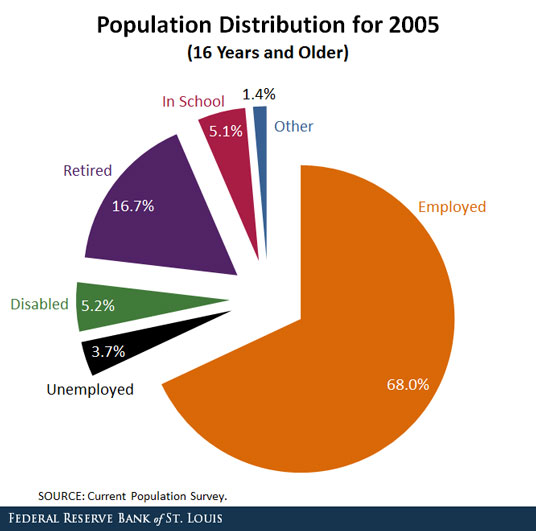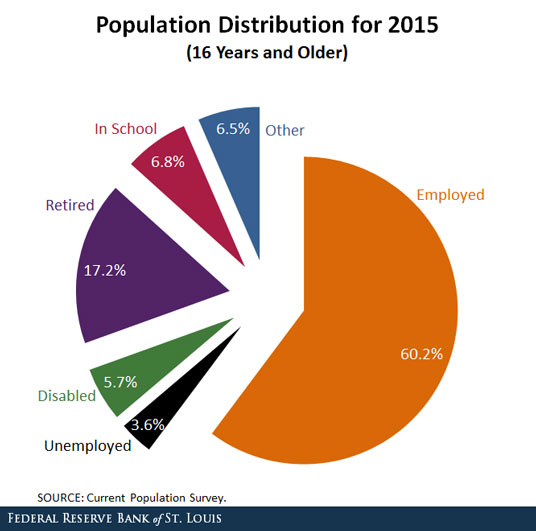How Have Prime-Age Workers in School Affected the Labor Market?

Many argue that even though the unemployment rate is low, labor market conditions are not strong because labor force participation has fallen substantially over the past few years. The concern is that the labor market won’t be able to absorb those who stopped looking for work once they return to the labor force.
An example is the members of the prime-age population (people age 25-54) who are continuing their education instead of participating in the labor force. To see how much this group might affect the health of the labor market, we compared the distribution of the population 16 years and older in the first five months of 2015 (the most recent data as of the time this analysis was completed) with the distribution in 2005. The results are in the charts below.


As many have argued, the decrease in labor force participation corresponded to a significant increase in the number of people in school. The concern is that workers will flood the labor market once economic conditions improve, significantly increasing unemployment. To test this, we simulated what the unemployment rate would be if those additional students were indeed unemployed workers.
If the same share of the population was attending school in 2015 as it was in 2005, the unemployment rate in May would have been 8.1 percent instead of the 5.5 percent observed that month. However, this is a very extreme case. As we argued earlier this year, a significant fraction of the young population (16-24 years old) increased their schooling rates due to more structural reasons. So, we consider two more-plausible scenarios.
In the first scenario, we kept the increase in schooling of the population 16-21 that has occurred over the past 10 years. But we kept the share of the population 22 and older that attends school in 2015 at its 2005 levels. In this scenario, the May unemployment rate would have been 6.6 percent instead of the 5.5 percent observed that month.
In the second scenario, we considered an increase in graduate studies. Suppose that the increase in schooling of the population 16-24 is kept, but the share of the population 25 and older that attends school in 2015 remains at its 2005 levels. The unemployment rate in May would have been 6.1 percent instead of 5.5 percent.
The data on schooling rates show that most of the increase in schooling has been among the young population. There are no reasons to think that prime-age workers discouraged by the health of the labor market and attending school might be disguising the real conditions of the labor market.
Additional Resources
- On the Economy: Trends in Youth Not in Education, Employment or Training
- On the Economy: What Size Firm Has Created the Most Jobs in the Recovery?
- On the Economy: How Long Until “Slack” Is Out of the Labor Market?
Citation
Maria E Canon, ldquoHow Have Prime-Age Workers in School Affected the Labor Market?,rdquo St. Louis Fed On the Economy, Sept. 7, 2015.
This blog offers commentary, analysis and data from our economists and experts. Views expressed are not necessarily those of the St. Louis Fed or Federal Reserve System.
Email Us
All other blog-related questions

